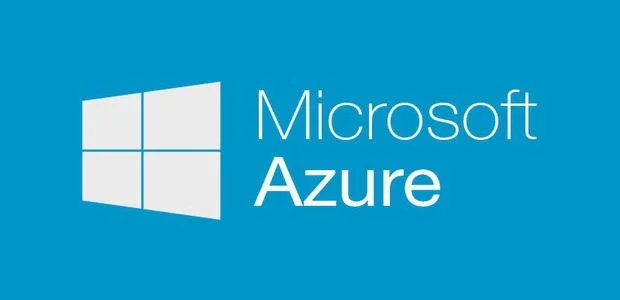Azure’s Ascendance: Microsoft’s Quiet But Potent Contender in the Cloud Arena
Amazon Web Services (AWS) may reign with an expansive suite of offerings, yet it is no longer unrivaled. Microsoft, a company synonymous with its dominance over personal computing in past decades, has meticulously forged its cloud platform, Azure, into a formidable adversary.
Azure’s arsenal continues to expand across numerous domains—spanning databases, storage, compute power, analytics, and DevOps. The breadth of these services makes it increasingly difficult to find a task Azure cannot perform. In several critical niches, it even nudges ahead of other cloud giants.
At its core, Azure provides many of the standard cloud staples. Whether you require a virtual machine running Windows or even Linux (yes, Linux!), Azure provisions it with minimal effort. If data storage is your concern, Azure ensures it is securely stowed, much like its rivals.
### A Cloud With Microsoft’s DNA
However, Microsoft’s inherent strengths manifest more vividly when you explore beyond these foundational services. This is the same corporation that not only dominated consumer and corporate operating systems but also reshaped the gaming console landscape. This finesse is unmistakable from the moment you engage with Azure. Competitors may shroud their offerings in austere, technical facades, but Azure exudes a layer of polish—aligned with Microsoft’s preference for user experience. While other providers lean heavily on cryptic acronyms, Microsoft’s branding resonates with elegance.
Azure is also a natural extension for those who have invested years in Microsoft’s development tools—C#, .NET, and Visual Studio. While these technologies function on other platforms, Azure makes them feel seamlessly at home. Migrating outside the Microsoft ecosystem is possible, but staying within it simplifies workflows, enhancing productivity.
### Harnessing the Power of Research
Microsoft’s long-standing commitment to corporate research—initiated in the 1990s—pays dividends in the cloud. Many of Azure’s innovations in artificial intelligence (AI) and machine learning (ML) reflect these deep roots in academic-grade research. These advancements, integrated across Azure’s services, distinguish the platform as a hub for businesses venturing into AI-powered solutions.
### Familiar Tools With a Cutting-Edge Twist
Azure’s design philosophy aligns with Microsoft’s most celebrated products, like .NET and ASP.NET. Developers with experience in these technologies can complete projects swiftly without retooling their knowledge. Newer frameworks—like Node.js, Java, and Python—are also welcome, but Microsoft ensures a smooth transition for legacy developers. Azure’s App Service provides support for multiple programming environments, further underscoring the platform’s versatility.
### Power Platform: Democratizing Development
The Power Platform extends low-code development to non-technical users, empowering “citizen developers” to create applications and workflows. These tools integrate business automation, reporting, and AI capabilities, enabling quick solutions for departments with limited IT resources. Microsoft bridges the gap between amateur and professional developers, streamlining processes within corporate ecosystems.
### Fluid Framework: Between Application and Document
Azure also introduces innovative tools like the Fluid Framework, an experimental hybrid between a word processor and an interactive app. Users can embed components like polls or calendars into documents, transcending the limitations of static content. Fluid Framework exemplifies Microsoft’s ability to blur lines between traditional software categories.
### Expansive Cloud Footprint: 60+ Regions
The cloud’s strength lies in its abstraction, yet regulatory and business imperatives sometimes require precise control over data geography. Azure, with its more than 60 regions, offers unparalleled location flexibility. Though not all services are available in every region, this geographic diversity enables compliance with local regulations, disaster recovery needs, and legal mandates.
### Visual Studio Integration: Tailored for Developers
Azure’s tight integration with Visual Studio—the industry’s gold standard in integrated development environments (IDEs)—further enriches the developer experience. Users can quickly deploy prebuilt Visual Studio instances on Azure, saving hours of setup. Developers benefit from optimized workflows, such as building and deploying Azure Functions directly from the IDE.
### Windows Virtual Desktop: Cloud-Powered Continuity
In response to the pandemic, Azure strengthened its support for remote workforces through Windows Virtual Desktop. This service replicates traditional desktops in the cloud, allowing employees to access familiar Microsoft Office tools remotely. Meanwhile, Azure Firewall safeguards network traffic, preserving the security posture of remote operations.
### Azure’s Backbone: Microsoft Office and Immutable Storage
Azure naturally excels at hosting Microsoft Office APIs, facilitating seamless integration between productivity tools and cloud infrastructure. Businesses leveraging Word, Excel, and PowerPoint benefit from tighter interoperability on Azure than on competing platforms.
The platform also offers immutable storage, a feature crucial for sectors requiring tamper-proof data. Auditors, financial institutions, and legal professionals value this capability to maintain unaltered records. Azure’s immutable storage supports legal holds and time-based retention policies, providing peace of mind in regulatory or litigation scenarios.
### Cosmos DB: Bridging SQL and NoSQL Worlds
Cosmos DB exemplifies Azure’s versatility in database services. This globally distributed database accommodates both SQL and NoSQL paradigms through multiple APIs. Developers accustomed to SQL can use familiar syntax, while those preferring schema-less NoSQL models have access to MongoDB, Cassandra, and other APIs. Microsoft’s aim is to meet developers where they are, eliminating friction from database transitions.
### AI-Powered Video Indexer and Game Development Integration
Azure’s Video Indexer capitalizes on AI capabilities to transcribe, catalog, and analyze video content, even identifying emotions and entities within frames. These tools resonate with industries managing large video libraries, from media houses to education platforms.
In gaming, Azure’s synergy with Xbox and Visual Studio strengthens the ecosystem. Game developers seamlessly connect front-end experiences with Azure-powered back ends, fostering high-performance, scalable multiplayer environments.
### Blockchain Workbench: Streamlined Ledger Solutions
Azure offers blockchain solutions through its Blockchain Workbench, providing templates for Ethereum-based ledgers. Whether leveraging proof-of-authority or experimenting with hyperledger clusters, Azure simplifies blockchain development for enterprises. These frameworks position the platform as a compelling choice for companies exploring decentralized technologies.
### Conclusion: A Cohesive Cloud Ecosystem
Azure distinguishes itself through deep integration with Microsoft’s legacy products, research-backed innovation, and robust support for modern technologies. Its expansive regional coverage, immutable storage options, and seamless alignment with Microsoft Office make it an ideal platform for enterprises invested in the Microsoft ecosystem. Yet, Azure’s commitment to open-source tools and emerging frameworks ensures it remains relevant for a broad spectrum of developers. For organizations steeped in Microsoft technologies or those seeking a versatile cloud solution, Azure deserves serious consideration.























